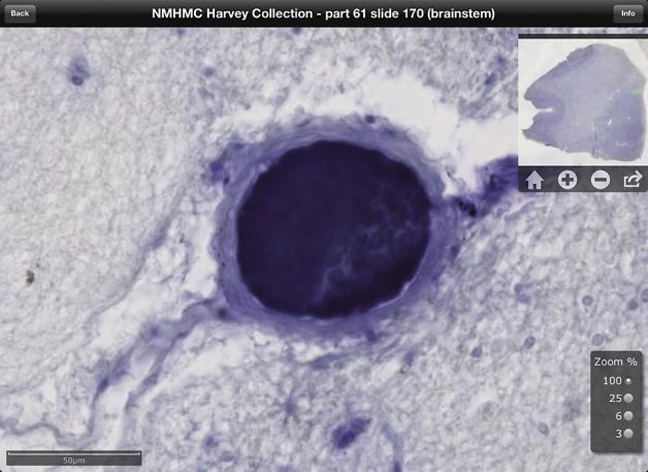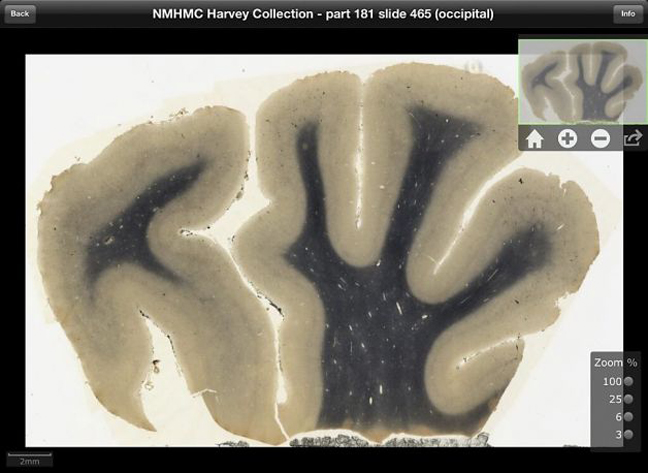In a study published in 1999 it was revealed that Einstein’s parietal lobe (the part of the brain that specializes in mathematics and spatial reasoning) was 15% wider than in a typical human brain. Now you and anyone else with an iPad can mine the brain of Albert Einstein for other such discoveries thanks to a newly-launched iPad app developed by the National Museum of Health & Medicine Chicago. For only $10 you can now have access to the digitized versions of nearly 350 slides produced from slices of Albert Einstein’s brain taken during his autopsy following his death in 1955.
Dr. Thomas Harvey was the pathologist who performed the autopsy on Albert Einstein at Princeton Hospital on April 18, 1955. Dr. Harvey removed the brain for study, segmented the brain into approximately 170 parts, roughly grouped by the various lobes and brainstem, and then sectioned those parts into hundreds of microscope sections. These sections were mounted on microscope sliedes and stained to highlight both cellular structure and nerve conductive tissue. Harvey’s estate donated the collection to the NMHM in 2010. In the spring of 2012 the NMC&MC obtained private funding support to begin digitizing this collection. This app makes available to the public the portion of the collection that has been digitized to-date. Subsequent releases of this app will add additional materials as their digitization can be completed.
All profits from the sale of this app will be used to support the Department of Defense’s National Museum of Health & Medicine in Silver Spring, Maryland, as well as the National Museum of Health and Medicine Chicago. For more details be sure to visit their website by CLICKING HERE, and to pick up your very own Harvey iPad app CLICK HERE. For all FEELguide stories related to Albert Einstein be sure to visit Albert Einstein on FEELguide.




